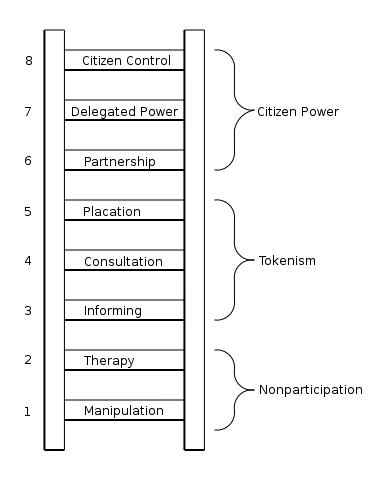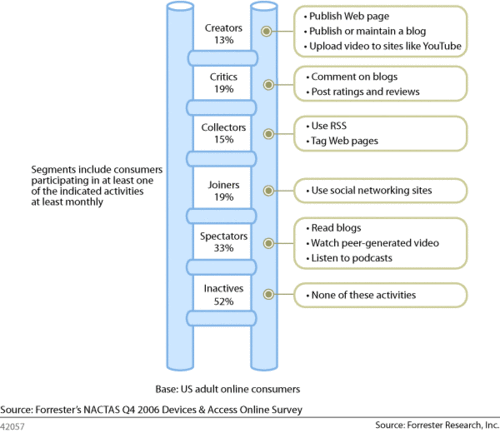Broken ladders
Let’s get polemic.
So Forrester Research’s Groundswell has released an update to their Ladder of Participation. Needless to say I’m annoyed. I have already heard from a few close nonprofit friends excited (I’m not picking on Beth, she gets it) by Forrester Research’s Social Technographics Report. Needless to say, I’m disappointed by their excitement. From the original blog entry:
The report also lays out how companies can create strategies using Social Technographics. For example, I’ve used the “participation ladder” to help figure out which social strategies to deploy first – and also how to encourage users to “climb up”, so to speak, from being Spectators to becoming more engaged. It’s my belief that not everyone is cut out from the start to be a Creator; nor is everyone inclined to jump with both feet into social networking. Companies seeking to engage customers with these new tools need to understand where their audiences are with this categorization.
From a social change perspective, in brief, that’s pretty fucked. And to be clear, it’s that mixing of engagement, audience, and customers. This is the chugger model taken off of the street and put online: engagement being the weasel word for brand identification. This is not about building power; it’s about having someone say something nice about your organization in a public place.
This is Forrester’s ladder:
Compare that to another ladder I really like: Sherry Arnstein’s Ladder of Citizen Participation (it came out in 1969 so be considerate of its lack of shinyness):

There is no practice in the Social Technographics report that I would put above the level of Placation (and that’s being generous).
I am disappointed that there are not more people applying existing models of community building to social media. Just because business has discovered the profit potential of relationships—and their apologists are flow-charting it with exuberance—is not a good reason to forget or ignore the large body of practice that has served community organizers and social change organizations for many, many years.
And I’m not always __pissy_ when I’m talking about nonprofits online, I just want people to focus less on the tools and more on the _practice_ (and I don’t mean _“best”_)._
